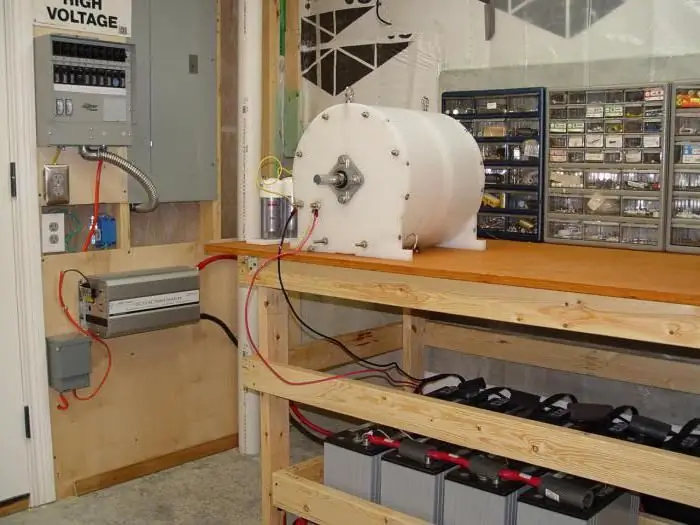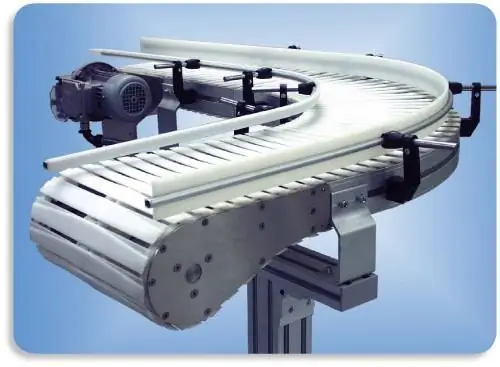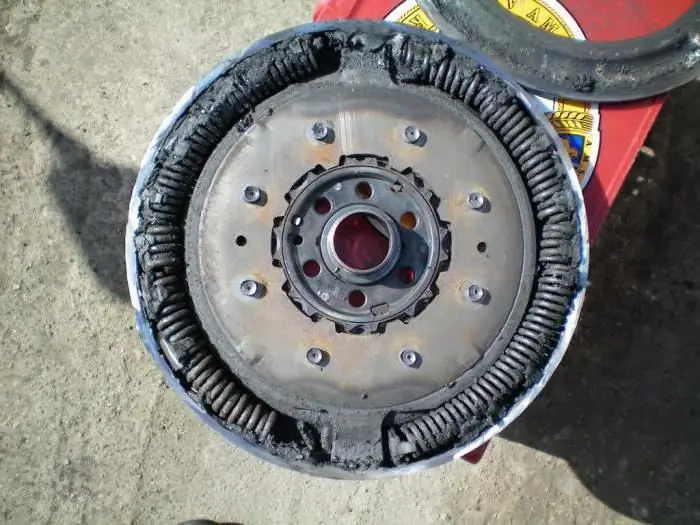2026 Author: Howard Calhoun | [email protected]. Last modified: 2025-01-24 13:10:37
Everyone knows that the main task of an engine is to convert energy into torque. Its transmission is carried out through a special flywheel of the clutch disc. This node is available in any car. How is it arranged and functioning? All this and more - further in our article.
Characteristic
The combustion of the fuel-air mixture produces a huge release of energy. The explosion is accompanied by the stroke of the piston, which, in turn, is connected to the crankshaft. The latter has a flywheel at its end.

It is he who transmits torque to the box, and then to the wheels. But between the engine and the gearbox there is one more detail - the clutch basket. The flywheel transmits torque unevenly. To smooth it out, the device has a friction disc. Thanks to the latter, the car is able to start smoothly and shift from up to downshift (and vice versa).
Thus, the clutch flywheel performs several functions:
- Provides uniform crankshaft rotationshaft.
- Transmits torque to the transmission.
- Starts the internal combustion engine from the starter.
We will pay special attention to the last characteristic. Along the circumference of the flywheel there are teeth (crown). They engage with the starter bendix. When the driver turns the ignition key, current flows to the electric motor. The clutch (bendix) begins to engage with the flywheel crown. The crankshaft is gaining momentum. This is how the engine starts successfully.
Note that the clutch flywheel itself is a round disc with a diameter of 30 to 40 centimeters. It is located between the clutch basket and the end of the crankshaft. There is a pulley at the second end of the shaft (with the help of a belt drive, the timing, the power steering system and the air conditioner are activated). There are 3 types of flywheels. We will consider the features of each of them below.
Solid
These flywheels are made of cast iron steel.

Have steel teeth on the outer surface. Very popular in the automotive industry. Installed on budget models.
Sports
Their main advantage is their low weight. Compared to the previous type, such flywheels weigh one and a half kilograms less. This makes it easier for the motor to spin up to high speeds.

However, its inertia is also reduced - such an element is not suitable for everyday use.
Dual Mass
They appeared relatively recently. Used on cars of the concern "Audi-Volkswagen". Also this flywheelcalled damper. And if the previous two perform the function of only transmitting torque, then the two-mass one also plays the role of a clutch. The design of the node is more technologically advanced. The element dampens oscillations and vibrations, reduces noise and wear of synchronizers. Ideal for powerful modern engines.

Why is this clutch now being used? The dual-mass flywheel is able to transmit torque to the box as smoothly as possible, due to the operation of damper springs. The weight of the node is an order of magnitude lower than that of analogues. Also the item is very compact.
Device
Clutch flywheel includes several elements:
- Spring package.
- Planet gear.
- Radial bearing.
- Spring pack stop.
- Separating slider.
- Auxiliary Corps.
- Axial bearing.
- Greasing cover.
It's all housed in the main flywheel housing.
How it works
Let's consider the principle of action. The clutch damper flywheel has a stepwise operation algorithm. First, the soft spring package is activated. They affect the start and shutdown of the internal combustion engine.

The second package has stiffer springs to dampen vibrations. All vibrations from the internal combustion engine are absorbed by these springs.
Both packages are connected using two plain bearings:
- Stubborn.
- Radial.
About shortcomings
Why notIs the clutch kit equipped with a dual-mass flywheel on all machines? The first reason is the complexity of the design. The assembly uses many elements (take at least two separate cases with their own springs), which, in addition, are filled with a special lubricant. If this element fails, a flywheel clutch replacement will cost $700-$900. The next minus is a low resource. These flywheels rarely live up to a hundred thousand. They don't like active kick-down driving. Throwing the clutch pedal sharply and overloading the car will not work here, otherwise the durability and service life of the mechanism will remain in question. Such cars do not like difficult maneuvers.

Also this clutch needs to be adjusted. Disc slip leads to increased wear of the linings. If the problem is not fixed in time, the load on the gearbox elements (including synchronizers) increases. At one point, the inclusion of gears will be accompanied by a characteristic crunch. And when starting, there is noise from the starter. In this case, the clutch flywheel requires urgent diagnostics. To get to it, you need to remove not only the starter, but also the transmission itself. And this is an additional cost.
What is killing the clutch flywheel?
As noted by the reviews, the resource of this element is 100-150 thousand kilometers. Experts say that this period is associated with improper operation of the clutch flywheel. And it's not just the kickdown. Often owners (especially on diesel engines) choose the lowest rpm range. In theory, this should reduceload on the engine and reduce fuel consumption. In practice, the vibration level of the flywheel increases. Damping springs are constantly involved in the work. When operating under load, they cannot withstand such operating conditions.

Also, the resource is affected by the number of ICE starts. Frequent operation of the motor in start / stop mode increases the load on the first spring pack. Vibrations also occur due to interruptions in the operation of ignition and injection systems. This also reduces the life of the clutch flywheel. If this is a commercial vehicle, much attention is paid to overloads. When the car is loaded more than normal, the load increases not only on the gearbox, but also on the clutch flywheel. He's overheating. Springs fly out. They do not tolerate such loads.
Shift noise
Many owners are faced with the problem of operating such flywheels. There is noise when shifting gears. In this case, experts note the wear of the axial bearing, which is located between the secondary and primary shafts. This happens due to the high load on the node. Also, the color of the flywheel acquires a yellowish tint. Wear is exacerbated by the lack of lubrication between the housings. As a result, "sliders", springs and plates work "dry". The problem is treated only by replacing the assembly.
So, we found out what the clutch flywheel is, how it works and how it works.
Recommended:
Electromagnetic drive: types, purpose, principle of operation

In the application of compact, productive and functional drive mechanisms today, almost all areas of human activity from heavy industry to transport and households are interested. This is also the reason for the constant improvement of traditional concepts of power units, which, although they are improving, do not change the fundamental device. The most popular basic systems of this type include an electromagnetic drive
Classification of engines. Types of engines, their purpose, device and principle of operation

Nowadays, most vehicles are powered by an engine. The classification of this device is huge and includes a large number of different types of engines
Electric locomotive 2ES6: history of creation, description with photo, main characteristics, principle of operation, features of operation and repair

Today, communication between different cities, passenger transportation, delivery of goods is carried out in a variety of ways. One of these ways was the railroad. Electric locomotive 2ES6 is one of the types of transport that is currently actively used
MPO-50: description, purpose, principle of operation

Today, no agricultural enterprise focused on the cultivation of grain crops can do without pre-treatment grain cleaning machines. Among the whole variety of mechanized means, the MPO-50 occupies a leading position - a machine capable of working with a wide range of agricultural products
Scraper conveyor: principle of operation, types, purpose and features

Scraper conveyors have become widespread in the coal industry. They can move the load along a fixed chute with the help of scrapers, which are connected by a movable chain. These conveyors are used to transport dusty, granular and lumpy goods

